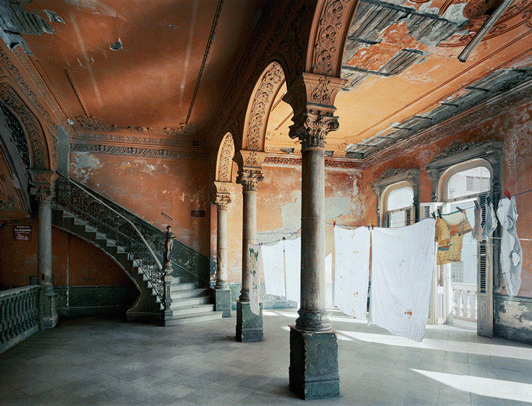Alluring with their luscious colours, yet haunting because of their subject matter, the large-format colour photographs of Robert Polidori are nothing short of captivating. Born in Montreal on February 10, 1951, Polidori is now one of the most noteworthy photographers of human habitats and environments. His works are highly detailed, in a visual sense, with the finest of fractures leaping off the prints that are rich in the histories they reveal.
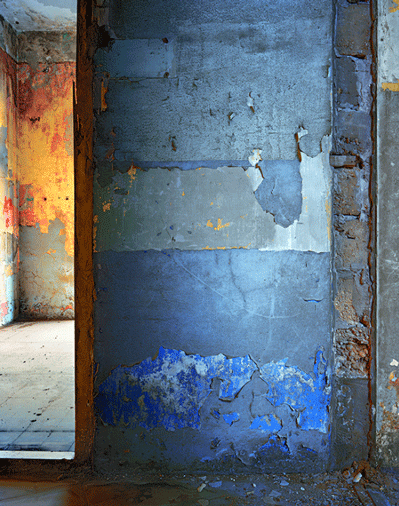
In the 1960’s Polidori, a child at the time, and his family moved to New York. He became Jonas Mekas’s assistant at the Anthology Film Archives. This would prove to be a pivotal point in his life, as Mekas would later organize the photographer’s first solo exhibition. While Polidori began his career in New York in avant-garde film, continuing his education encouraged him to try new mediums. Polidori received his Master’s degree in 1980 from the State University of New York at Buffalo. It was shortly after this point in his life that his curiosity was piqued by the capabilities that photography afforded.
Through photography, Polidori began recording the restoration of Versailles in the early 1980s. He has since been able to preserve the changes it has undergone by photographing the site for over thirty years. He is also known for having photographed New York’s Lower East Side apartments after the death of their tenants, Castro’s Havana, and Beirut post-war. Interested in more than aesthetics, he considers the rooms in places he photographs as vessels for memory and as places forever marked by the lives of those who lived there.
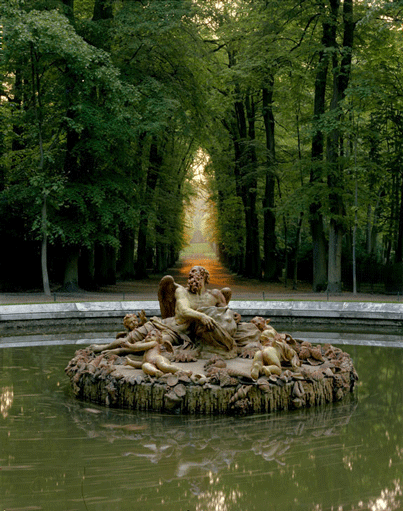
Suffering undoubtedly comes up in a conversation about Polidori’s work because of the human fragility his work portrays through ravaged houses and crumbling mansions. The lack of any people in his photographs speaks volumes. Having been commissioned to document Hurricane Katrina’s destruction in New Orleans, Polidori is no stranger to working through disaster, natural or otherwise. This is evident through his detailed 2001 documentation of the Chernobyl nuclear power plant after its radioactive explosion in 1986.
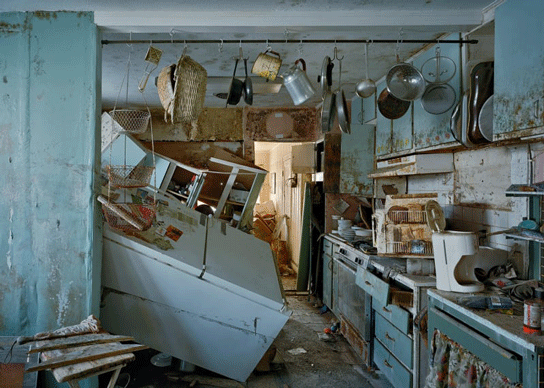
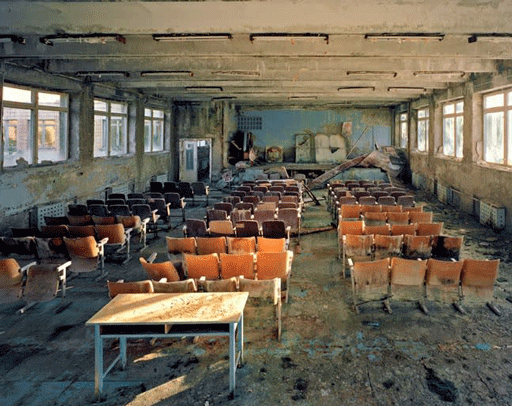
What is most captivating about his photographs is the sense of stillness they invoke offering a moment of peacefulness amid surrounding turmoil. This stillness comes from the photograph’s composition but also from the process through which it was made. Working with a large-format camera and slow shutter speeds, Polidori reflects upon this idea of quiet stillness even in the initial stages of his work. This stillness is necessary for such works depicting human conflict and natural disasters as it creates space to explore how individuals can overcome such adversity.
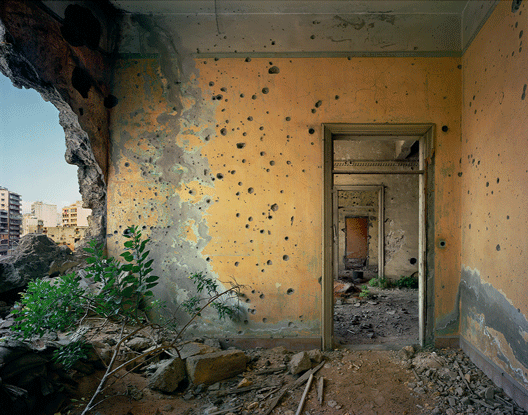
The photographer’s work touches on a wide variety of United Nations Sustainable Development Goals (SDGs) but connects perhaps most prominently to those involving peace and infrastructure. Peace, Justice and Strong Institutions is one such goal. While Polidori’s work, of course, visually depicts areas experiencing conflict, it also encourages viewers to reflect upon and potentially facilitate the alternative; peaceful societies.
The United Nations SDG 9 refers to Industry, Innovation and Infrastructure. Through Polidori’s work, it is evident that developing resilient infrastructure is integral to benefit society. Alongside sustainable industrialization, these factors work together to increase work opportunities and generate income.
Today Polidori works and lives with his family in Ojai, California. More of his highly detailed, melancholic works can be seen by visiting his website.
